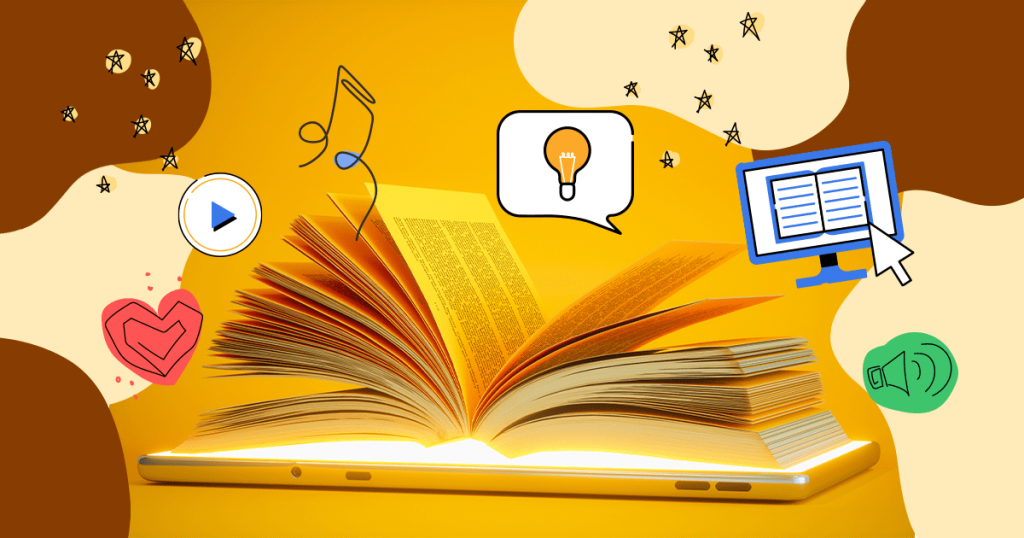Telling stories is a way to communicate. Something as simple as an anecdote is a conversation starter, just like reading a novel that talks about a concept to the reader. On World Storytelling Day, we will talk about how stories came into being.
Storytelling started with visual stories, such as cave drawings, shifting to oral traditions, in which tales were passed down from one generation to another by word of mouth. Then, there was a shift to words formed into narratives, including written, printed, and typed stories.
Drawings by Cavemen
A cave painting found on an Indonesian island appears to be the earliest known storytelling record through pictures. According to them, the work dates back nearly 44,000 years. It shows that humans, even cave dwellers, rely on visual representations in all societies. The painting was found in a limestone cave on the island of Sulawesi in 2017. It shows eight human-like beings hunting six animals. Among the animals are native species such as buffaloes and warty pigs. The researchers say the painting suggests a “game drive, a communal hunt.”

The human-like creatures appear to be carrying ropes and spears. The researchers say it shows that the Sulawesi hunters at that time may have attempted to capture live adult pigs and buffaloes.
The Indonesian cave painting also provides some of the earliest evidence of human spirituality, said Adam Brumm. He is an archaeologist at Australia’s Griffith University, which carried out the research. Brumm was a co-writer of a report on the study.
Oral Storytelling (Katha)
It tells a story through voice and gestures like a grandmother telling bedtime stories to kids. The oral tradition can take many forms, including epic poems, chants, rhymes, songs, etc. Not all of these stories are historically accurate or even true. It can encompass myths, legends, fables, religion, prayers, proverbs, and instructions. One of the oldest storytelling forms is the spoken word. Members of ancient societies would captivate each other by sharing stories via song, chant, and poetry recitation.

This form of storytelling could be a vehicle for any narrative. Even the Bhagavad Gita was a dialogue between Lord Krishna and Arjuna. In Ancient Greece, people would flock to a great storyteller like Homer, who would forge an emotional connection with his audience as he told them a great story of epic battles and lost love. With the advent of new forms of technology like radio and podcasts, the art form of oral storytelling now can reach millions of people.
Written storytelling
The written word is immortal. It stays even when the author is gone and can be read and analyzed for years to come. As time progressed, oral and visual stories were written into short stories and epics. A classic example is the Mahabharata, the epic poem that now exists through various translations. It also provides space for reimagined work of the already existing text, like Palace of Illusions by Chitra Banerjee Divakaruni, who showcases the Mahabharata differently. It also becomes a medium to reach areas lying out of one’s context, like forms of story types—from fairy tales to newspapers to novels—reaching global audiences and altering the history of storytelling forever.
Digital storytelling

Technology is a powerful tool that is now dominating the act of storytelling. The rise of television, film, and radio has given great storytellers a more comprehensive platform than ever. And it is also leading to the rise of new and innovative storytelling techniques. The internet allows us to access a seemingly endless library of compelling stories with a simple click of a button. We can watch movies from across continents, look at interviews, live telecasts, and even connect digitally with our peers do so. In addition, blogging and social media – textual modes of storytelling—have reframed the kind of stories we interact with daily. Millions of Twitter, Instagram, and Facebook users use their accounts every day to convey their points of view. With social media, we are all storytellers, trying to make sense of our own origin story one post at a time. With each tweet and status update, we sharpen the storytelling skills that we’ve been practising for millennia.
Gone are the days when you started the definition of stories was limited to – ‘Once upon a time…’. Today discussing a novel’s plot, recalling a fun trip adventure, etc., can be considered telling a story because you are recounting an experience to someone else.
And stories generate stories. So, how will you develop new story ideas unless you start discussing them? It works best in favour of writers who are always looking for inspiration. And readers, you can always exchange a story or two and get book or movie recommendations.
We at Empowr Club are also telling and listening to stories. If you want to be a part of our reading/writing community, then sign up here:
IOS: https://apps.apple.com/in/app/empowr-club/id1601528050
Android: https://play.google.com/store/apps/details?id=com.empowrclub.app
